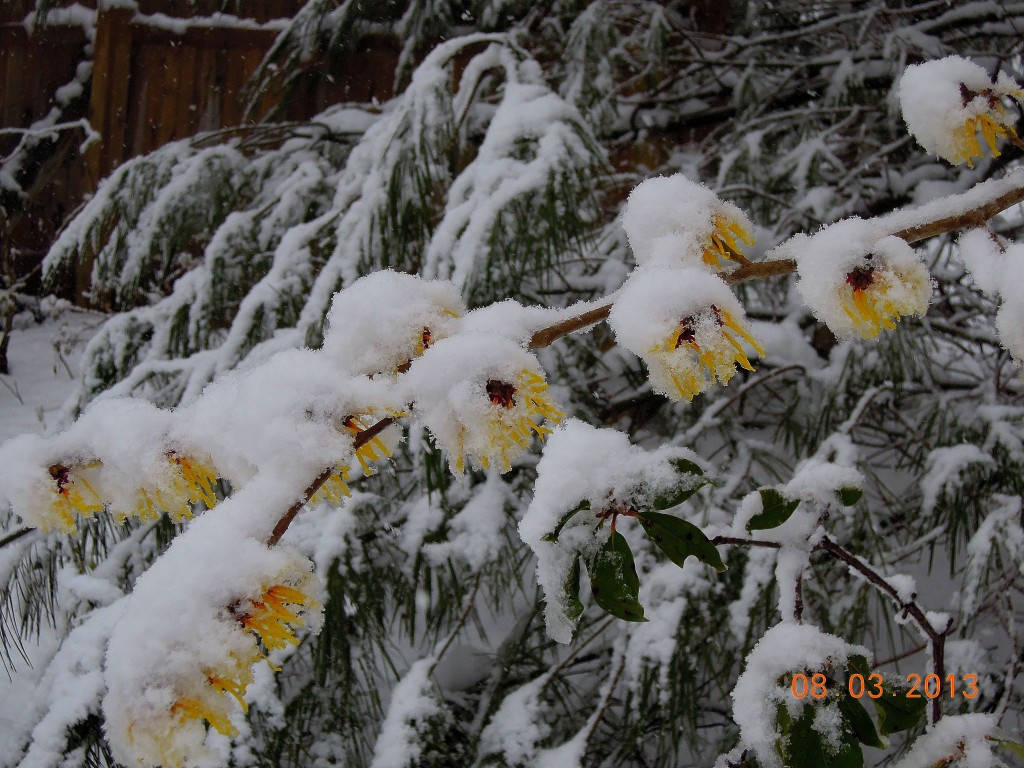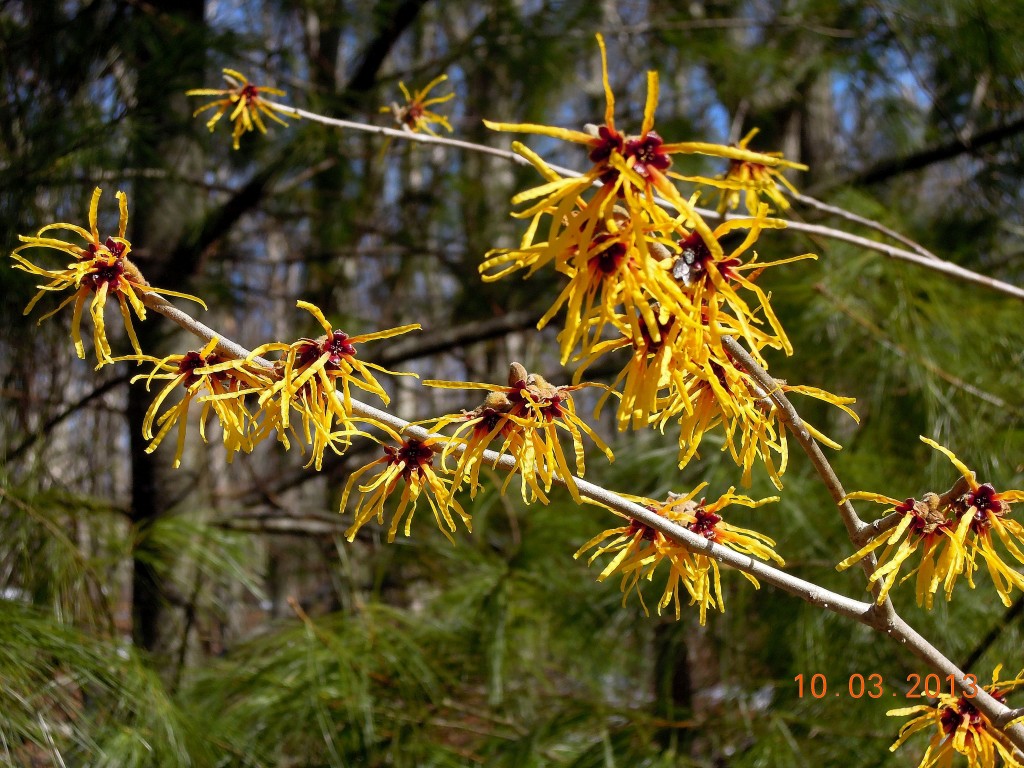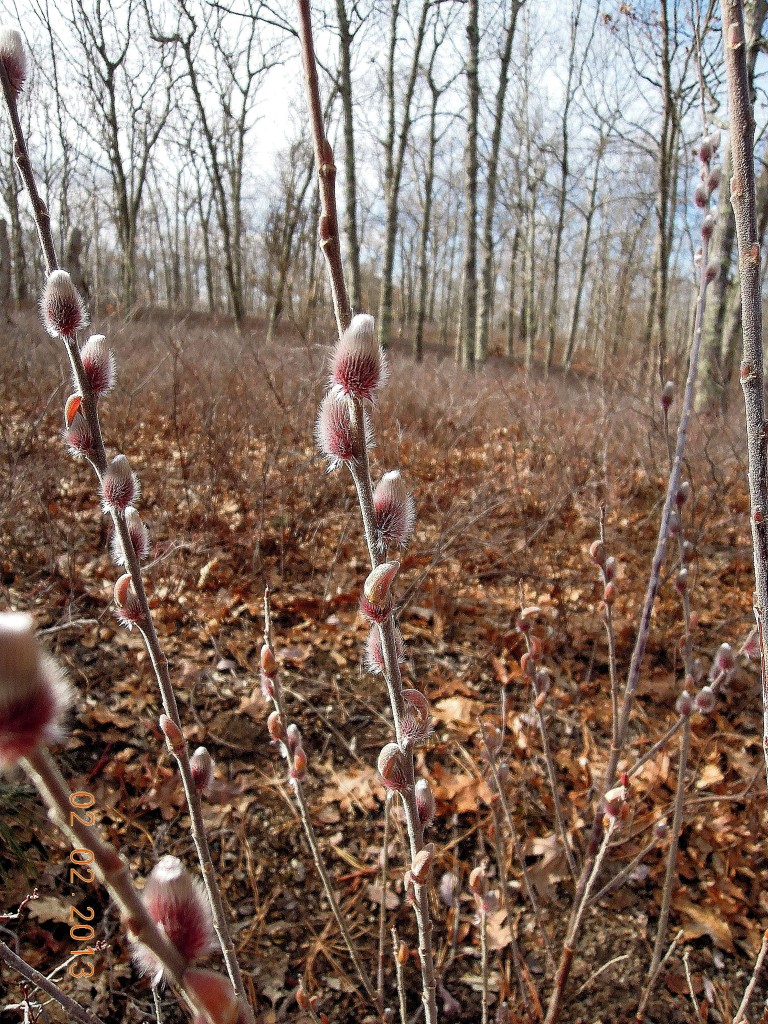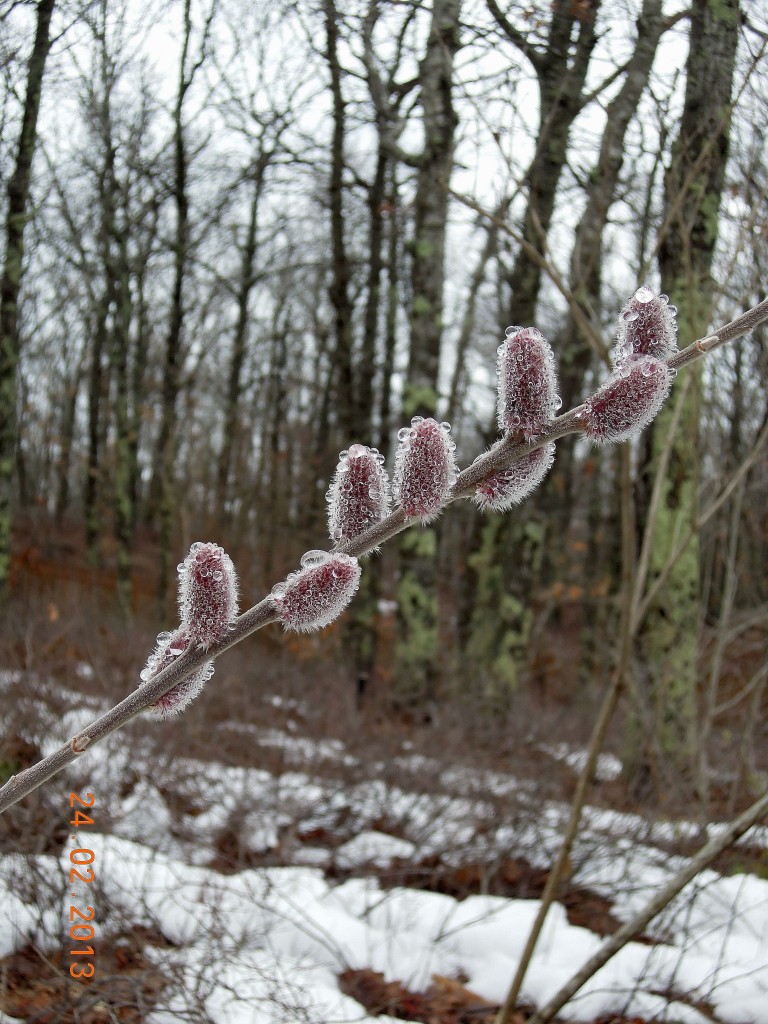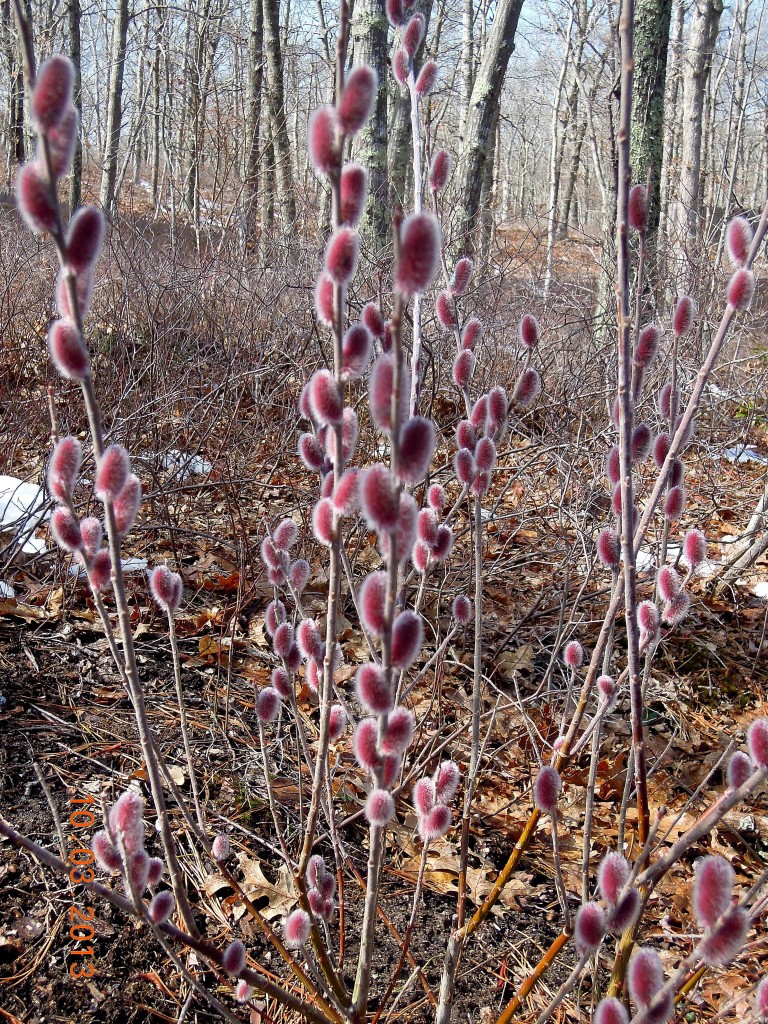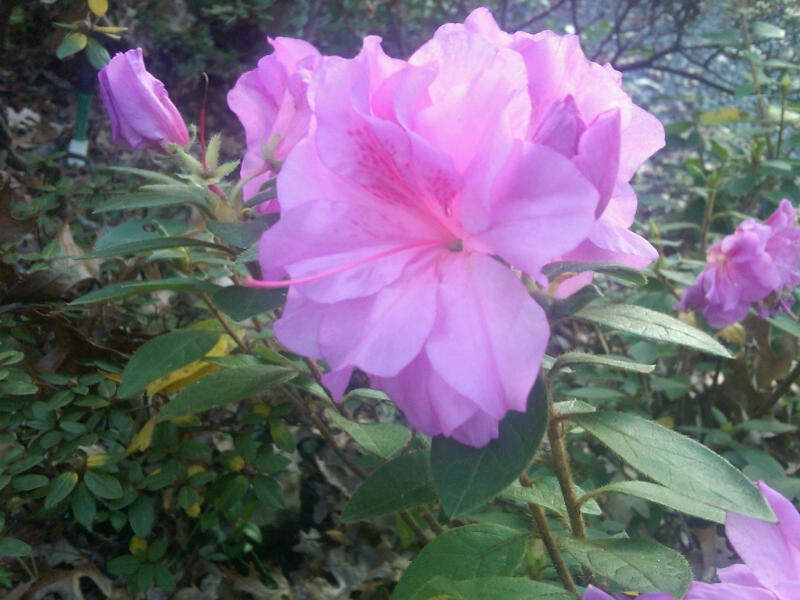I was longing for Spring but Mother Nature’s Evil Twin wasn’t finished with us. As soon as the snow melted enough to see bare ground, we were zapped with yet another storm on March 8th—my birthday, no less—causing more havoc and ruin. It’s enough to make your head spin.
Thank goodness for the intrepid and beautiful Hamamelis x intermedia ‘Pallida’. ( Zones 5-8 ). This award-winning, sweetly fragrant Witch Hazel bloomed on, despite the strong winds and heavy snow. Pallida has lovely yellow flowers with vibrant reddish-purple calyxes and foliage that turns a rich banana-yellow in the Fall. According to Witch Hazel guru, Chris Lane, “It sets the standard on which to judge all others.” ( See Lane’s authoritative reference, Witch Hazels, Timber press, 2005.)
Witch Hazels do best in compost enriched, well-drained, acid soil. It’s important to supply sufficient moisture, especially in times of summer drought. Mulching helps. My Pallida flourishes with filtered sun in winter and early spring before the oaks leaf out and in high shade thereafter. It’s sited in front of a white pine that serves as an ideal backdrop for the hazel’s flowers.
Another winter-wonder worth mentioning is the magical Salix chaenomeloides ‘Mt Aso’ (Zones 6-8), a Pussy Willow adorned head-to-toe with fabulous pink catkins. Irresistible!
Like Witch Hazels, Willows appreciate moist, well-drained soil, but require more sun. Mt. Aso, relatively new to my garden, is faring well with filtered morning sun. As you can see from the before-and-after snow storm photos below, the pink “pussy willows” have been doing their star-turn for months, despite MN’s ET’s never-ending winter assaults. Amazing!
It has now warmed up a bit. Dare we hope for an early Spring?
March 29 Post Update: Mt. Aso is a bottomless well of interesting. Check out the Springtime Fashionista in pale yellow, dove grey, and a sprinkle of pink.
